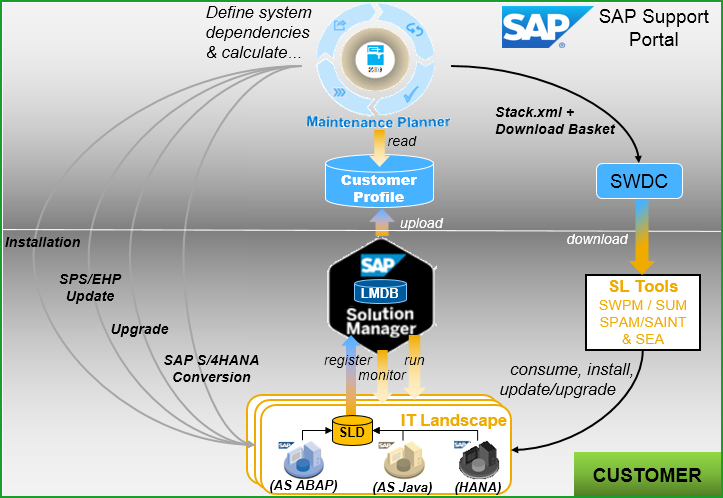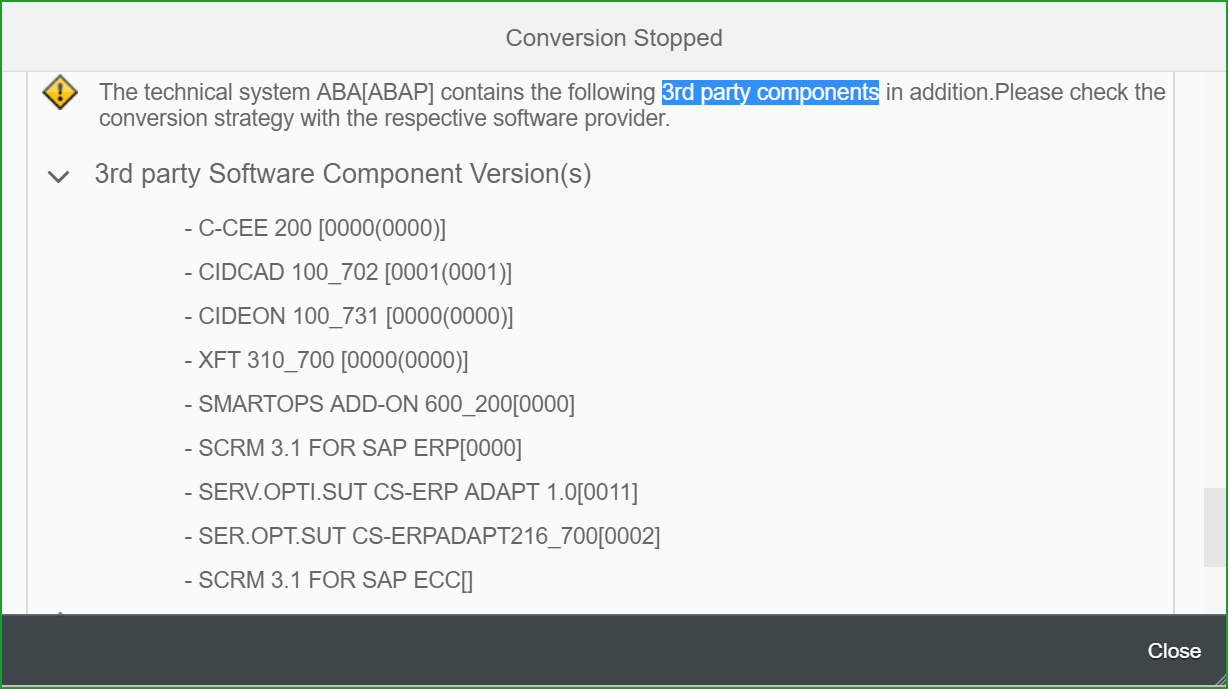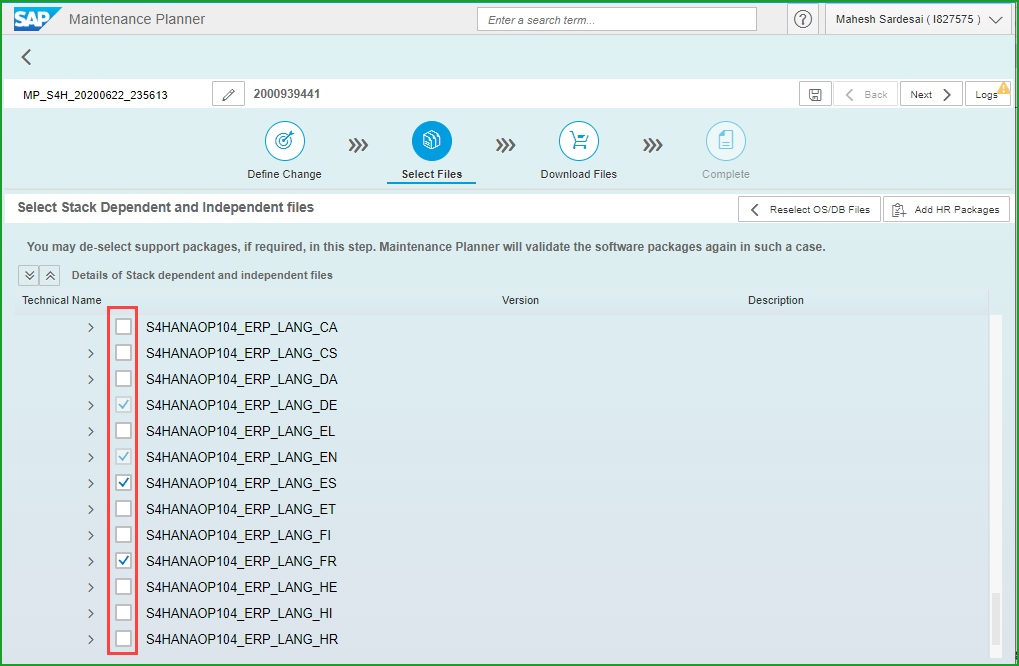
- SAP Community
- Products and Technology
- Enterprise Resource Planning
- ERP Blogs by SAP
- S/4HANA Conversion - t3 - Maintenance Planner step...
- Subscribe to RSS Feed
- Mark as New
- Mark as Read
- Bookmark
- Subscribe
- Printer Friendly Page
- Report Inappropriate Content
This blog is for Conversion from ECC6/EHP6 to S/4HANA - t3 of the conversion steps to be done in sequence below. Maintenance Planner (MP) checks your components, add-ons, active business functions and industry solutions to ensure compatibility with the SAP S/4HANA. This is a mandatory step that creates the stack file used during the t5 - SUM tool process. We will focus on Sandbox type system with co-deployed (embedded) gateway.
Download the Maintenance Planner User Guide for reference
PART 1: OVERVIEW
Please login to Maintenance Planner to access system assigned to your S-user. Please ensure landscape data is uploaded to SAP support portal via LMDB of SAP Solution Manager. The system that you are converting has to be defined in OSS under your customer ID. The diagram below shows the Maintenance Planner cloud service and how it integrates with Customer system. System data is uploaded to the Customer Profile via SLD and LMDB; in the Maintenance Planner changes are defined and stack.xml and download basket are prepared. Consuming tools are Software Provisioning Manager Software (SWPM), Software Update Manager (SUM). etc.
System data is uploaded to the Customer Profile via SLD and LMDB; in the Maintenance Planner changes are defined and stack.xml and download basket are prepared. Consuming tools are Software Provisioning Manager Software (SWPM), Software Update Manager (SUM). etc.
From LMDB the data is uploaded to customer profile in SAP support portal using Solman daily job – Landscape Fetch.
TIP1: If there is issue in replicating you may be asked to apply Note 2186164 – Problem in replicating systems to Maintenance Planner. Also apply min SPAM 69 in source system.
TIP2: Maintenance planner separates data based on Customer Number. So ensure you use same customer number to define system in sapnet using the S-user id belonging to this same Customer number.
TIP3: It is recommended to connect your system to Solution Manager but if it is not yet connected or if it is not updating Maintenance Planner (MP) correctly, please use this workaround to Add System in MP. But in this case please ensure all Add-Ons and Business Functions are correctly recognized.
Logon to the S/4HANA backend system in client 000. Enter tCode SPAM -> Utilities -> Generate system info XML -> download file. If the above menu option is not available, run report RSLANG20 as per Note 2645566 - Option SPAM->Utilities->Generate System info XML is missing
If the above menu option is not available, run report RSLANG20 as per Note 2645566 - Option SPAM->Utilities->Generate System info XML is missing
TIP4: In case your system is at a stack level below minimum, DMO/SUM tool will stop with error at PREP_INPUT_CHECK/SUMCHK. The release note 2625407 has details on minimum netweaver stack level required. The stack.xml should be created only after this.
PART 2: PLAN FOR S/4HANA
We will create stack.xml. In Maintenance Planner click on tile Plan for SAP S/4HANA.
TIP: The other way to try to do this is using tile Explore Systems and then select the instance. Please do not use this option as it is most likely the Front End Server will not be considered.
Select Convert Existing ERP system to SAP S/4HANA System.
Select the Existing ERP system E6D, Target version of S/4HANA, Target stack FPS and select Target Product Instances. In the next screen please select Additional Systems. It is recommended to select Fiori FrontEnd Server Co-deployed with Backend. Click on Next.
In the next screen please select Additional Systems. It is recommended to select Fiori FrontEnd Server Co-deployed with Backend. Click on Next. You may get messages for different types of messages as shown below. If there is a showstopper message with Red exclamation, you may not be able to proceed further. You may have to create OSS ticket.
You may get messages for different types of messages as shown below. If there is a showstopper message with Red exclamation, you may not be able to proceed further. You may have to create OSS ticket.
TYPE 1: ADD-ONS NOT SUPPORTED
The example is as shown below:  Please refer Note 2214409 - SAP S/4HANA: Compatible Add-ons and Note 2214409 - SAP S/4HANA: Compatible Add-ons
Please refer Note 2214409 - SAP S/4HANA: Compatible Add-ons and Note 2214409 - SAP S/4HANA: Compatible Add-ons
TYPE 2: UNINSTALLABLE ADD-ONS
 For Uninstalling Add-Ons please refer Note 2011192 - Uninstallation of ABAP add-ons The individual Add-on notes are indicated above.
For Uninstalling Add-Ons please refer Note 2011192 - Uninstallation of ABAP add-ons The individual Add-on notes are indicated above.
TYPE 3: BUSINESS FUNCTIONS NOT SUPPORTED
 Please refer Note 2240359 - SAP S/4HANA: Always-Off Business Functions In this note there are attachment files with details of Business Functions for every S/4HANA release.
Please refer Note 2240359 - SAP S/4HANA: Always-Off Business Functions In this note there are attachment files with details of Business Functions for every S/4HANA release.
The REASON for this is - if in the Source system the Business Function is ON and in the Target system the Business Function is Always off then it is a showstopper and Conversion is not possible. However there are exceptions to this - few Business Functions as mentioned in Note 2240359 for example Business Function ISR_RETAIL_RMA.
For Business Functions always ON please refer Note 2240360 - SAP S/4HANA: Always-On Business Functions
TYPE 4: BUSINESS FUNCTIONS DELETED BY TOOL

Here the Business Function LOG_EHS_PSS_CONC4PSS would be deleted during the upgrade. You may also like to check if Note 2369043 - SFW: S/4HANA 1610 installations with inconsistent SFW_ACTIVE_B2 content applies.
TYPE 5: 3RD PARTY COMPONENTS

Please refer SAP Note 2696603 - SAP S/4HANA, on-premise edition 1809 : Compatible partner productsand for S/4HANA 1909 please refer SAP Note 2834099 – S/4H 1909: Compatible partner products
As SAP does not have information about the 3rd Party components, only a WARNING is displayed. You can contact the software provider using Certified Solutions Directory
TYPE 6: INDUSTRY SOLUTIONS
Please refer SAP Note 2659710 - SAP S/4HANA 1809: Restriction Note
TYPE 7: COMPONENTS NOT CHECKED

The above WARNING message shows that the component is not checked. It also states that the technical system does not have java technical system connections.
If there were no showstoppers, you will be able to proceed ... Select Linux on x86_64 64 bit, Confirm Selection
Select Linux on x86_64 64 bit, Confirm Selection You have to also select the files for the Source OS/DB
You have to also select the files for the Source OS/DB
Click on Stack Ind files NON-ABAP below
Deselect the languages not applicable as below and click on Next.
TIP: Before you click on Push to Download Basket, in the next screen, you may like to empty the download basket for your S-000 user so that any files added to the download basket are meant for this task and will help to ensure that only the required files are included.
In the next screen click on Download Stack XML, Download Stack Text File, Download PDF and Export to Excel to download the files to your desktop. Out of these you will have to ftp the stack.xml file to the server. It will look something like this – MP_Stack_2000540583_20181011_.xml
In the pdf file downloaded above, in the Planned Changes section there is a link provided that takes you directly to Service Marketplace to download the media.
TIP: After the sandbox upgrade, for upgrading the landscape please download stack.xml for entire landscape - DEV, QAS, PROD, etc as Maintenance Planner may have slight changes over time.
Download all the media into /sapmedia/download. You need the files below for the installation, please check if these are in download folder: SUM20SP08_1-80002456.SAR - or latest version of Software Update Manager.
TIP: To save time needed for scanning files, move files S4HANAOP104_LOAD* to a separate folder like /sapmedia/1809_EXP.
PART 3 - ADD OTHER FILES NEEDED
In addition you will require file crlbag.p7s from https://tcs.mysap.com/crl/crlbag.p7s
When uploading this file to media please include the stack.xml file as this is not included in download.
TARGET DATABASE (HDB):
You need HANA database (min SPS04 Rev 44 for 1909 fps2 )please download the latest version files below from Software Downloads => SUPPORT PACKAGES AND PATCHES => SAP HANA PLATFORM EDITION => SAP HANA DATABASE 2.0
You also need to download latest version of the HANA client from Software Downloads => SUPPORT PACKAGES AND PATCHES => SAP HANA PLATFORM EDITION => SAP HANA CLIENT 2.0
If you want to install LiveCache you will require the HANA database LCAPPS plugin from Software Downloads => SUPPORT PACKAGES AND PATCHES => SAP HANA PLATFORM EDIT 1.0 => HANA LCAPPS => SAP HANA LCAPPS 1.00
Download all the media and separate the following into separate directories for convenience under /sapmedia (min rev 33 for fps0 and min rev 36 for fps1)
IMDB_SERVER20_48_0-80002031.SAR
IMDB_CLIENT20_004_202-80002082.SAR
IMDB_LCAPPS_2048_0-20010426.SAR
SOURCE DATABASE HDB:
You may have to upgrade database to min HANA 2 SPS4 Rev48. May be a 2 step upgrade..
Ref Note 2372809 - Guideline for Upgrading a SAP HANA 1.0 to SAP HANA 2.0 System
Check which plugins are installed in HANA Database using studio, Administration=> Overview.
TIP: In case the HANA database has AFL plugin installed you will need the corresponding AFL plugin file, download it together. If you download later on, and the available download for HANA server changes to a higher patch even within rev 33, you cannot just download AFL available at that time when AFL is at available at higher level. It is recommended to download the needed plugins at same time. Also evaluate the need for plugins and uninstall using hdblcm of the currently installed release before upgrade if not needed.
PART 4 - MINIMUM SOURCE DATABASE RELEASE
Below minimum is based on SUM SP08 as per SAP Note 2882441 - Database Migration Option (DMO) of SUM 2.0 SP08. These minimum releases may be different if you use a different release of SUM.
SOURCE DATABASE DB6 (DB2 FOR LINUX, UNIX AND WINDOWS):
Upgrade to DB6 ver 10.1.0000 or higher as per Note 2882441
SOURCE DATABASE ORA:
Upgrade to Oracle ver 11.2, (ver 12 for downtime optimized DMO) as per Note 2882441
SOURCE DATABASE MAXDB:
Upgrade to SAP MaxDB ver 7.6 or higher as per Note 2882441
SOURCE DATABASE MSS:
Upgrade to MS SQL Server 2008 or higher as per Note 2882441
SOURCE DATABASE ASE:
Upgrade to SAP ASE Version 15.7 or higher (ver 16.0 SP02 PL07 for downtime optimized DMO) as per Note 2644872
Please refer Product Availability Matrix for all other database types
LANDSCAPE CONSIDERATIONS:
The Development, Quality, and Production systems are converted at different times. So the stack file can have slightly different component levels although same stack level is selected. So output the stack.xml for the Quality and Production System at same time and freeze the landscape for adding components.
The option of System Track does not work for System Conversions and Upgrade and should not be used..
COMPONENT FOR INCIDENTS:
You can open OSS messages using component BC-UPG-MP
OTHER REFERENCES:
Maintenance Planner Help Portal
Maintenance Planner User Guide
Maintenance Planner – Frequently Asked Questions
Overview of Maintenance Planner
https://blogs.sap.com/2017/12/15/maintenance-planner-in-system-conversion-to-s4hana-1709/
https://blogs.sap.com/2016/11/02/sap-s4hana-system-conversion-at-a-glance/
S/4HANA 1909 Conversion Guide
S/4HANA 1809 Conversion Guide
SAP S/4HANA 1909 System Conversion Steps & Details – How to be prepared
Thank you. Hope you enjoyed the blog !
Mahesh Sardesai
Product Expert – S/4HANA
Brought to you by the SAP S/4HANA Regional Implementation Group
- SAP Managed Tags:
- SAP S/4HANA
You must be a registered user to add a comment. If you've already registered, sign in. Otherwise, register and sign in.
-
Artificial Intelligence (AI)
1 -
Business Trends
363 -
Business Trends
21 -
Customer COE Basics and Fundamentals
1 -
Digital Transformation with Cloud ERP (DT)
1 -
Event Information
461 -
Event Information
24 -
Expert Insights
114 -
Expert Insights
153 -
General
1 -
Governance and Organization
1 -
Introduction
1 -
Life at SAP
415 -
Life at SAP
2 -
Product Updates
4,685 -
Product Updates
209 -
Roadmap and Strategy
1 -
Technology Updates
1,502 -
Technology Updates
88
- The Role of SAP Business AI in the Chemical Industry. Overview in Enterprise Resource Planning Blogs by SAP
- SAP ERP Functionality for EDI Processing: UoMs Determination for Inbound Orders in Enterprise Resource Planning Blogs by Members
- SAP Fiori for SAP S/4HANA - Technical Catalog Migration – How the migration process works in Enterprise Resource Planning Blogs by SAP
- SAP Fiori for SAP S/4HANA - Technical Catalog Migration – Why and Getting Ready for Migration in Enterprise Resource Planning Blogs by SAP
- SAP Enterprise Support Academy Newsletter March 2024 in Enterprise Resource Planning Blogs by SAP
| User | Count |
|---|---|
| 11 | |
| 10 | |
| 6 | |
| 6 | |
| 4 | |
| 4 | |
| 4 | |
| 3 | |
| 3 | |
| 3 |